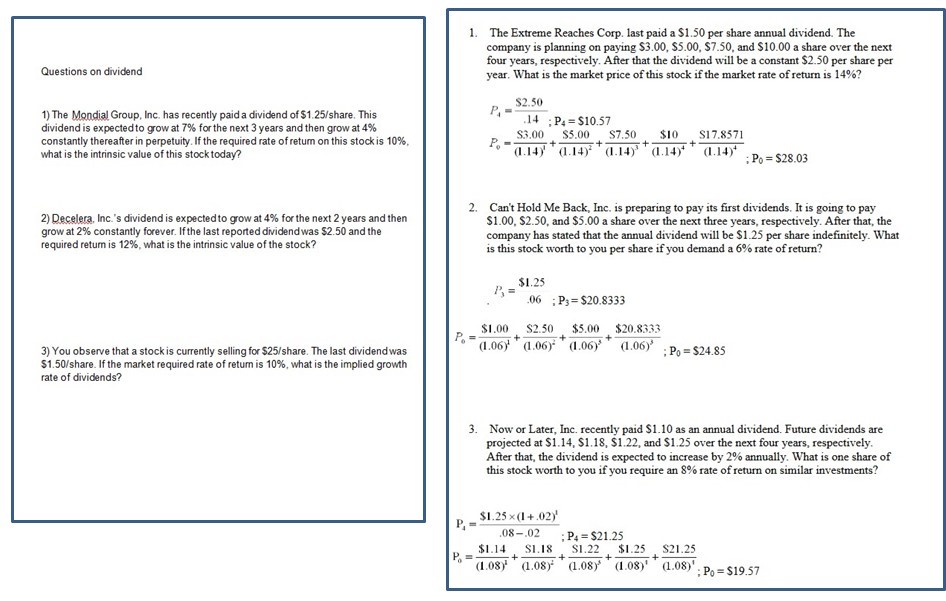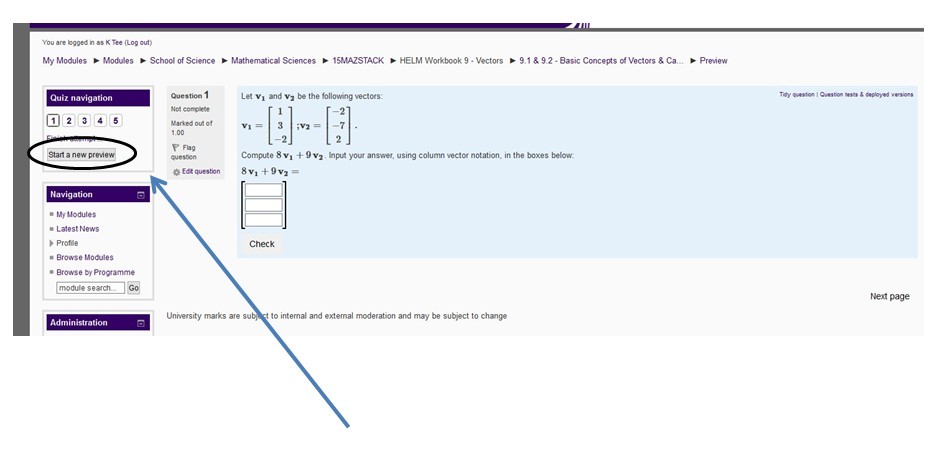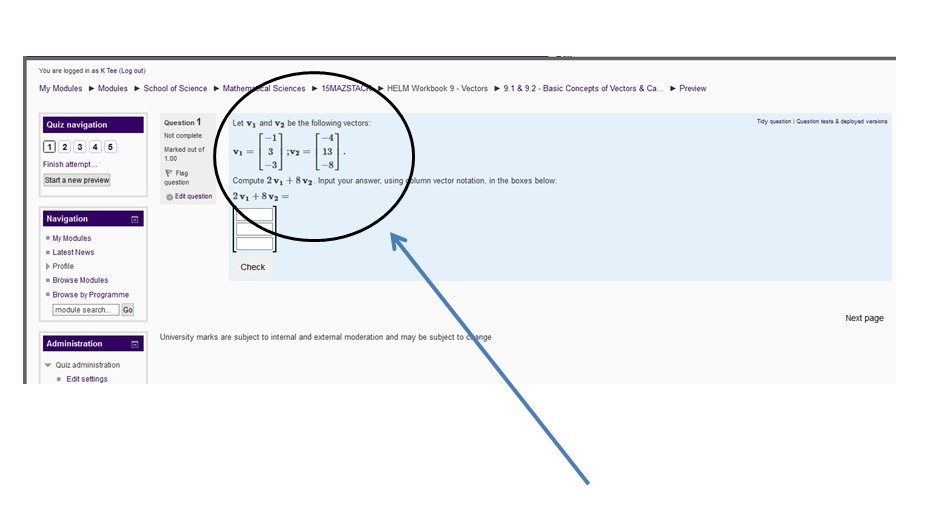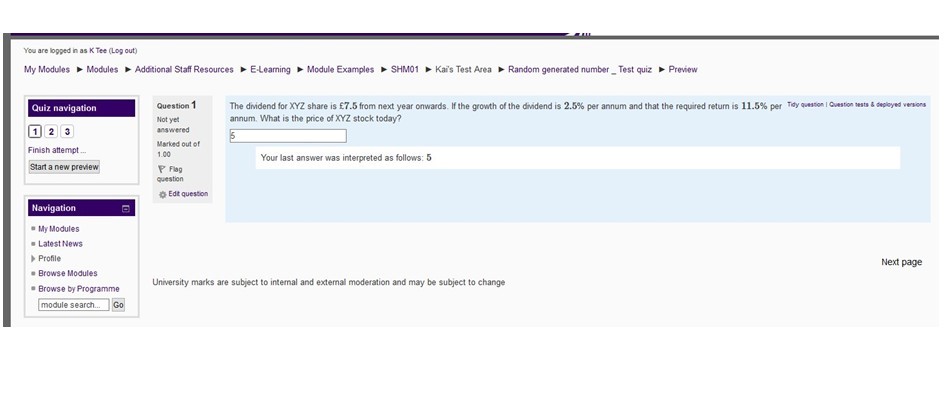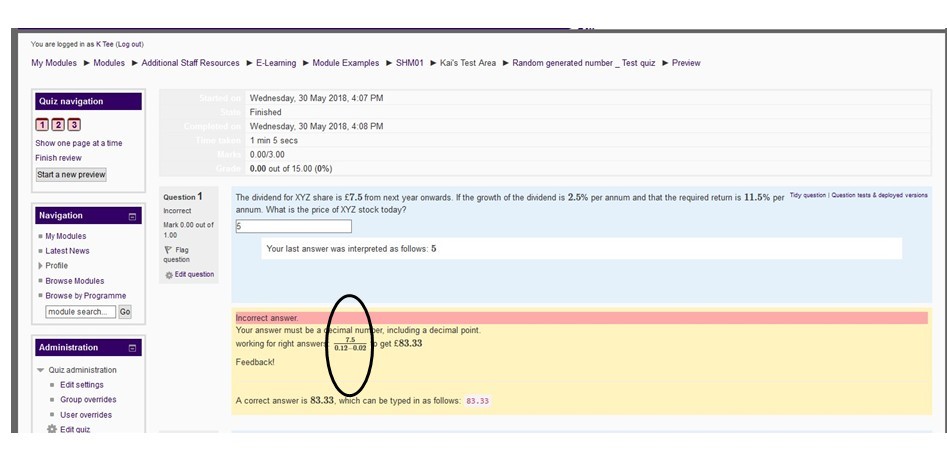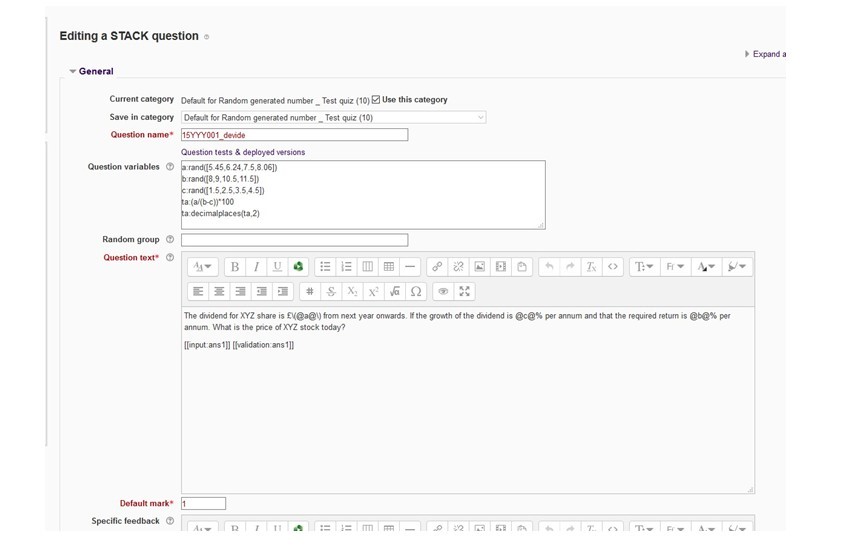Supporting students’ learning using STACK: Application on a Finance module
Kai-Hong Tee (School of Business and Economics) has been using the STACK question type in Learn to generate mathematical questions. In the post below, Kai explains how it works and why it benefits students.
Background
I am currently teaching “Financial Management” which is offered as a core module for our second-year students studying for the “Accounting and Financial Management” (AFM) and “Banking and Financial Management” (BFM) degree programs, which are currently one of the best in the UK, with the latest ranking from the Guardian at the second place after University of Bath. The AFM degree is also accredited by the professional accounting body, we follow strict criteria when teaching the students and appropriately assessed them. However, as this module is also opened to other students whose degree programs are less mathematical in nature, such as Marketing and International business, it is important that “Financial Management” must provide sufficient support taking care of a wider range of students of different capabilities. This prompted me to re-think and re-design an existing self-assessment exercise that already has been available to students on LEARN. Figure 1 shows the questions and answers I have been using to help students on Learn. This assessment is based on one topic (equity valuation) in which most students don’t feel very confident, based on my observation and years of experience teaching “Financial Management”.
As you can see from figure 1, this self-assessment exercise consists of limited questions. The aim, however, is to encourage students to gain a better understanding on the topic through practicing doing the problems. However, for the weaker students, having just 4 or 5 questions may not be enough to develop the skill required for this topic.
Why use the STACK question type?
To efficiently supply larger number of questions so as to allow students to have more chances to practice them to acquire the skills, I adopted the STACK question type in the Learn Quiz activity to enable mathematical questions to be generated automatically. Currently, STACK has been applied in different schools, including the subject areas of engineering and mathematics. Figure 2 shows a snapshot of a question set up using STACK on LEARN. Figure 3 shows that using STACK it is possible to generate a similar question to be done again with different information. This then allows students to have additional practice.
I’ve applied this idea to “financial management”. Figure 4 is an example of a question. Figure 5 shows that students will receive feedback on the answers they provide.
New questions will be generated automatically and can be viewed by clicking on “start a new preview” (see figure 3), the implementation of STACK therefore involves some program coding. Figure 6 gives a snapshot of the “program coding” screen. Here, every question is treated as a “model”, and the “numbers” in the question as “variables”, since they will be different in each attempt of the students to “start a new preview”. Figure 6 shows the range of “variables” (inputs) that you want to set for your questions, representing the “new” question each time a new preview is attempted.
What’s next?
One issue I face here is that the “new” question won’t have the text changed, just the “numbers”, there may therefore be a familiarity after a few rounds of practicing the questions if there are insufficient questions. Therefore, to increase the effectiveness, more questions can be included to reduce biases arising from “getting right answers because of familiarity”. These questions of different level of difficulties are then re-shuffld for each new round of attempt made by the students.
An area that is worth further developing is to incorporate adaptive learning pathways. Basically, I would only need, for example, 5 questions of different levels of difficulty, and then work on them to create pathways based on the feedback (answers) from the students. From the feedback, this then indicates which level of difficulty is reasonable to further assess the students. It may be possible for STACK to be developed in a way that students are led to attempt questions of reasonable level so that their standards are monitored and matched so that appropriate skills could be developed alongside sufficient practices of more suitable questions. This will be an area for future investigation. If workable, this should support the weaker students better. This implies that students could practice more questions and become more skillful based on their level of understanding, rather than simply practice any available questions without adequate understanding of their standards.
Further information at STACK can be found on the following page:
http://www.stack.ed.ac.uk
Tutorials on STACK are available on: https://stack2.maths.ed.ac.uk/demo/question/type/stack/doc/doc.php/Authoring/Authoring_quick_start.md
The STACK project team also recently won a HEA CATE award to disseminate STACK across other institutions: https://www.heacademy.ac.uk/person/open-university-stack
